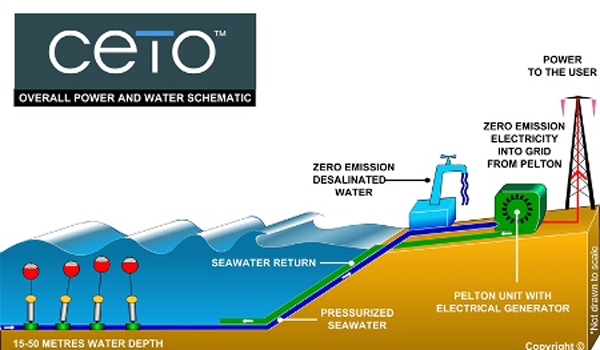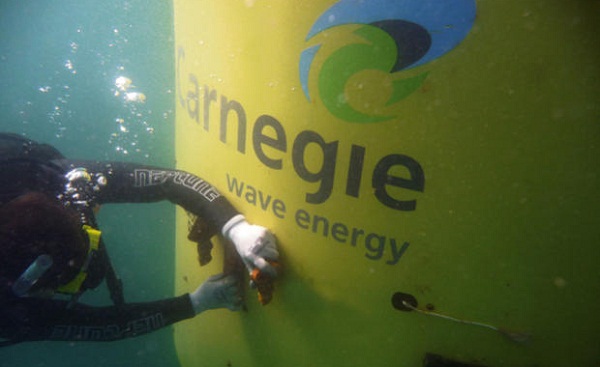Bermuda is on the way to getting its first wave energy installation after a yearlong study showed the Caribbean island’s viability for commercial marine power.
Australian wave energy developer Carnegie Wave Energy carried out the feasibility study using a wave measuring buoy in the waters off the Bermuda coast.

The buoy collected data on the power and frequency of waves over a 12-month period. The study was carried out in collaboration with Bermudian company Triton Renewable Energy, and with the technical support of the Ground Electronics Services and Bermuda Weather Service.
Working together with Triton, Carnegie said it was planning to develop a commercial scale wave farm providing up to 20 megawatts (MW) of electricity generation and desalinated water to Bermuda.
Bermuda is one of the highest consumers of energy per capita in the world and the island’s government has been looking at ways of decreasing its reliance on imported diesel. Like many remote islands, Bermuda imports most of the fuel needed to supply its energy needs, at a significant expense to the island’s finances and to the environment.
The Bermudan government has already set goals in an Energy White Paper, released last year, of cutting the island’s carbon dioxide emissions drastically by 2020.
In a statement, Tim Hasselbring, Triton’s managing director, said: “Bermuda is a densely populated isolated oceanic island with limited natural resources that can be called upon. This project promises significant benefits to the community in the form of job creation, significantly increased energy and freshwater security and reduced dependence on imported oil.”
“As a densely populated isolated oceanic island with a sophisticated infrastructure, Bermuda has limited natural resources that we can call upon. What we do have, in constant motion day and night, is ocean swell,” Hasselbring added.
If it gets the go ahead Carnegie’s project will use the company’s own Ceto wave energy technology. Named after a Greek sea goddess, Carnegie’s Ceto wave power system is unique in not requiring construction of undersea grids or high voltage transmission lines; and it also produces fresh water through seawater desalination.
Consisting of submerged buoys anchored to the sea floor and tethered to pump units, the system relies on the movement of waves over the buoys helping to drive pumps, which pressurize water and deliver it onshore through a pipeline. The high-pressure water drives onshore hydroelectric turbines, generating zero-emission electricity.

In a statement Carnegie’s site development manager Tim Sawyer said: “We look forward to working with the Bermudan government to further develop a commercial CETO wave energy facility in Bermuda. This would follow on from Carnegie’s Perth Wave Energy Project which recently received $16 million in Australian federal government and Western Australia state overnment grant funding.”
As well as its projects in Western Australia and Bermuda, Carnegie has also planned a similar project in Ireland, and is working on several proposed projects, including in British Columbia.